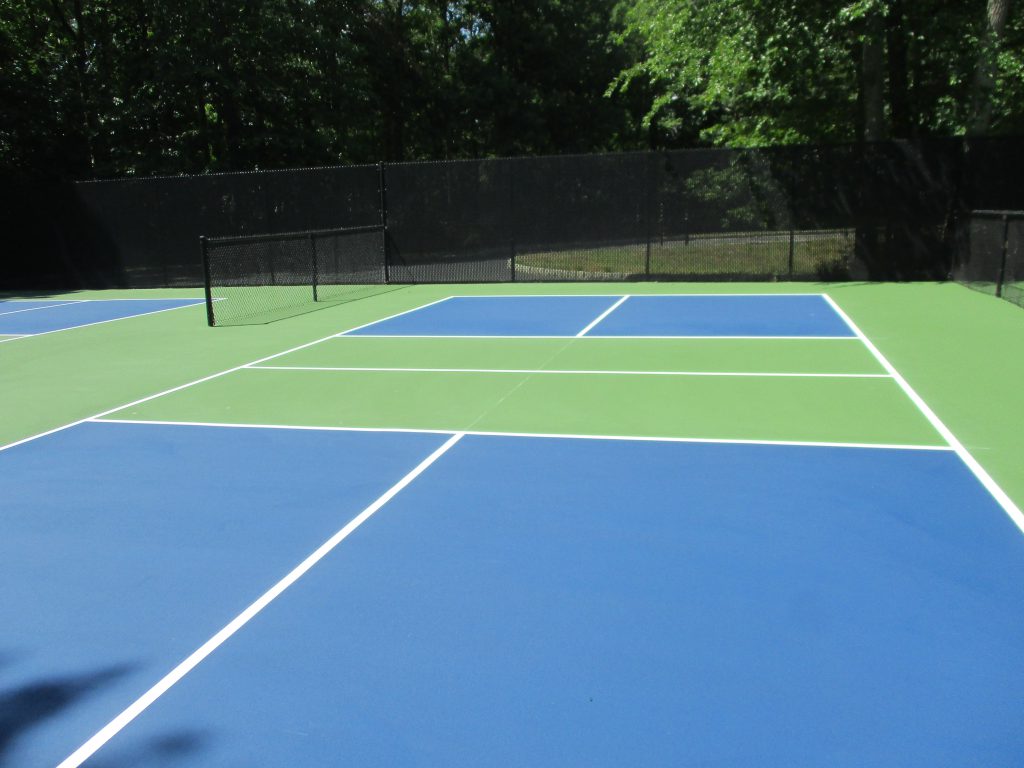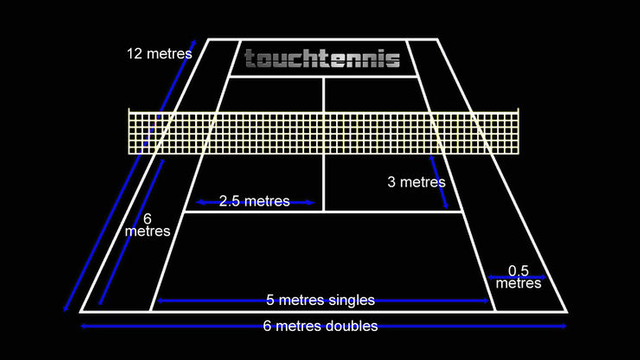
Pickleball has its own rules for the kitchen. The kitchen is a small part of the court where players are prohibited from striking the ball while it is still in the air. This is typically 7 feet from the net. It is the area where high-ball shots can be taken, but not volleys. To prevent players hitting into one another while close to the net, these kitchen rules are essential.
Pickleball's volley refers to hitting the ball hard before it touches ground. Volleys, which are used to increase speed when the ball is hit high, can be useful. Volleys are also useful when the ball is not high enough to be hit with a single groundstroke. Groundstrokes are used to run an opponent or to sustain long rallies.
To start a volley, the player must not be within the kitchen line. If the opponent is located in the Kitchen, the partner has the right to intervene and move them outside of the Kitchen. Otherwise, the volley must be in the non volley zone.

Another rule is that the opponent will win the point if they serve in the kitchen. However, a player in the kitchen may move out of the room after a serve has been served. The ball can then be volleyed. This will result in the opponent losing the point.
Groundstrokes are shots that occur after the ball bounces, unlike volleys. Groundstrokes are shots where the ball is hit after it bounces. Groundstrokes are therefore very easy to target. It is difficult to start a volley if the player has been in the kitchen.
A volley is when one player jumps up to hit a ball. Unlike a groundstroke, a volley will only be legal if the player hits the ball before it bounces. Likewise, a groundstroke will not be legal if the ball has landed in the non-volley zone.
The non-volley zone is defined by parallel lines at the sides and bottom of the net. If the player is in the Kitchen or Non-Volley Zone, he can hit the ball, but the opponent will not be able to.

You should also be familiar with the rules of pickleball. The rules for pickingleball kitchen include the following: If your opponent is in the Kitchen, you must have the ability to block the ball and stop him from leaving the Kitchen. In the Kitchen, the opponent can touch the hat of the player and be penalized.
Another rule is that a serving can reach the kitchen line. But this is not considered a fault. The player who defends the Kitchen must instead return the serve to their opponent.
One other thing to remember is that a volley is not legal inside the Kitchen. There are a few exceptions to this rule, but only when the player is in the Non-Volley Zone.
FAQ
Can I eat while I'm exercising?
Yes. Yes. You can eat whatever you want while you exercise. Make sure you choose low-calorie snacks such as watermelon, carrots, celery, apples, bananas, and grapes. These foods have nutrients that can help you perform better in your workouts.
What is the importance of good nutrition?
Nutrition is important for our health and well-being. Healthy eating includes whole grains, fruits, vegetables, lean protein, dairy, and other healthy foods. Healthy eating habits lead to improved overall health.
What are resistance training exercises?
Resistance training includes using weights and other objects to perform specific movements. For example, lifting weights strengthens your arms, shoulders, chest, back, legs, and core. Resistance training helps build muscle mass and bone density. It also promotes overall strength.
What happens if my sleep is not enough?
Your brain won't receive enough sleep if it doesn't get the signals it needs to regulate hormones, chemicals that regulate appetite and metabolism. In turn, this can cause you to eat more and gain weight. Overeating can also be caused by a lack of sleep.
What are Cardio Exercises?
Cardiovascular exercises are those that require your heart and lungs to work harder than normal. You can do this by running, swimming, biking, rowing and bicycling. These activities increase metabolism and burn fat. They are also great ways to keep fit.
Statistics
- Globally, 81% of adolescents aged 11-17 years were insufficiently physically active in 2016. (who.int)
- An estimated 110,000 deaths per year could be prevented (cdc.gov)
- One study showed that adults who watch more than 4 hours of television daily had an 80% higher risk of death from cardiovascular disease. (heart.org)
- Physical activity confers the following maternal and fetal health benefits: a decreased risk of pre-eclampsia, gestational hypertension, gestational diabetes (for example, 30% reduction in risk) (who.int)
External Links
How To
How to Lose Belly Fats More Fast
Belly Fat is often thought of as a problem when trying to lose fat. It's actually a good thing, in fact. Your organs will be protected by the amount of belly fat. Let's find out how to lose belly fat quickly.
The main factors that contribute to our body fat accumulation are stress and inactivity. The cortisol hormone stimulates stress which makes us hungry. Cortisol levels are increased by insulin. The excess calories stored as fat are then stored by insulin. A lack of sleep leads to adrenaline being released into the system which causes an increased appetite. These extra calories can also be reduced by exercise
There are many different ways to reduce bellyfat. You can choose to try any of these options, depending on your budget. Here are some quick tips to get rid of belly weight.
-
Reduce your food intake. Don't eat three large meals at once. You'll eat fewer calories this way.
-
Drink plenty of fluids. Water flushes out toxins and keeps you hydrated. You won't overeat if you drink water before you eat.
-
Avoid snack foods that are unhealthy. If you're looking for quick fixes, snack foods like chips, cookies, candies, etc. Although tempting, they can be very unhealthy. These sugary treats have lots of empty calories so avoid them. Instead, choose healthy alternatives like fruits, veggies, nuts, seeds, and whole grains.
-
At least three times per semaine, do strength training. Strength training increases muscle mass, which can help you burn more calories while still resting. It also strengthens bones, muscles, ligaments, tendons, the heart, lungs, and joints.
-
Stretching and walking are good habits. Stretching can improve flexibility, mobility, and reduce back pain. Walking for 30 minutes is a great way to burn calories.
-
Reduce alcohol intake. Reduce alcohol intake. Alcohol is a waste of calories and has no nutritional value.
-
Lose weight gradually. Your current weight is the first step to losing weight. Then, add 5% to 10% to your body weight to get your ideal weight. Once you have calculated your target body weight, you can begin to cut calories by 500-1000 calories every day until your goal is reached.
-
Avoid processed foods. These foods are high on sugar, salt, and additives. While processed foods can be convenient, they don't offer enough nutrients to ensure your health.
-
Don't skip breakfast! Breakfast improves concentration, memory, energy, and stamina. Breakfast should contain protein (like eggs), fibre (like oats), as well as complex carbohydrates (like oatmeal).
-
Have regular bowel movements. Gas and bloating can result from irregular bowel movements. To prevent this, drink plenty of water and increase fiber intake.